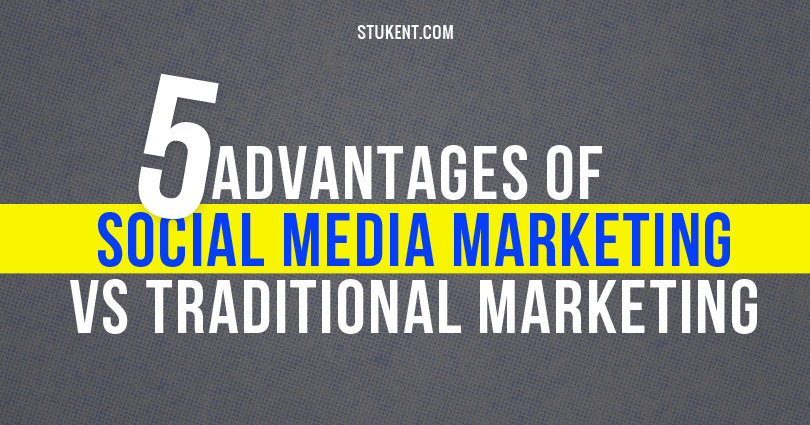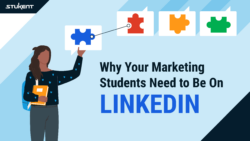Take a look at marketing as a whole today, and you’re likely to see something uncomfortable.
Uncomfortable is what happens when the traditions that have shaped your industry for generations are getting disrupted by new media with constantly shifting marketing options, specifically the ones presented by social media marketing. Marketers that have worked in print, radio, and TV for decades are now trying to adapt to the advertising, marketing, and branding potential presented by tweets and ‘grams, and it’s kind of messy. (and sometimes embarrassing)
A few standards have been established, though, and social media is proving to have its advantages over the old ways. Nobody is completely phasing out traditional marketing yet, but there are a few specific ways that social media marketing is rising above the rest as a marketer’s most useful tool. Read on, and let’s talk about the advantages of social media marketing over traditional marketing.
Metrics
If you’re working with a social media marketer of any experience level, one of the first things they’ll claim as social media marketing’s advantage is probably the metrics (also called analytics) that show you how many people interacted with your social content and who they are.
Twitter is a great example. With Twitter’s analytics, you can track who gets involved with your post, who tweets at your brand, and what kinds of people they are.
You’ve probably heard the quote from John Wanamaker: “Half of my advertising is wasted. I just don’t know which half.”
That’s true for traditional marketing, but thankfully social media marketing provides a better option through the use of metrics, letting you figure out just who you’re talking to.
Image-building
Social media marketing presents a powerful level of brand image development. Take a look at what Taco Bell does on their feed.
It’s meaty. It’s cheesy. It’s kind of snarky. It’s also fun to read and interact with, since they’ll get back to you if your post about them is interesting enough.
Even if your brand’s tone is a little more serious, you can still market on social media to build up your brand’s image as a thought-leader in the community.
Maybe your tone is more suited to LinkedIn, or to Facebook’s older audience. It’s also possible that your products or services are more visually based, and an Instagram channel would be a better fit for you. Whatever your brand, there’s a social media that can help you develop it further.
Real engagement
Active, personal engagement with your audience is another way that social media shines. Let’s look at Virgin America.
They post interesting content about the development of their company, which is great but not the point.
The point is that on their feed you’ll find multiple instances of them interacting with real customers in real-time, providing crucial information about flights and following up with people on the quality of their service. There’s no wait of 2-3 business days for an emailed reply, or any frustrating “Press 5 to talk to a live representative.” There’s just your brand, talking to your consumers one-on-one.
This builds brand loyalty, but only if it’s maintained over a long period of time. You’re gaining loyal supporters one by one, and that takes a real, human, empathetic touch from your brand’s voice.
Just make sure your social media intern is a nice person.
Agility
Traditional media marketing campaigns are often organized around a quarterly schedule, and that means they’re not very responsive to shifting trends or recent developments in the world they get presented to.
That’s OK. Being responsive has never really been their job.
One of the main advantages of social media marketing over traditional marketing is that it offers an agility to your brand’s response time that was unknown fifteen years ago. As David Meerman Scott put it in The New Rules of Marketing and PR, “Social networking allows companies to communicate instantly with their existing and potential customers.”
Instantly. That’s some astounding opportunity to secure loyal clients and customers in the exact moment they need you.
Audience Targeting
You remember that quote about wasting half your advertising? This is where you figure out which half you’re wasting and only use the other half.
When you air a television commercial, it gets blasted to the four winds, broadcast to anyone who tunes in.
Certainly, you can try to gauge which networks or channels are going to be composed of the highest concentration of your target audience, but you’re always going to have a lot of fluff made up of people who don’t really care about your product.
This is where we see the real advantages of social media marketing over traditional marketing.
Using programmatic tools to get your ads in front of the right people (and only the right people) is the easiest that it’s ever been. Take Facebook ads as an example.
You can select the precise demographic, psychographic, and geographic market that you want when you advertise with social media, which use their vast amounts of user data to get your ads in front of people who you have calculated are more likely to be interested in your product.
It’s a beautiful thing.
An Organic Approach
If that was all too much exulting in social media’s advantages, just take this away: social media’s main advantage versus traditional media is its organic way of interacting with your brand’s consumers directly, in a way that builds your image as a brand that cares. (or that can at least tweet funny pictures)
Hope to repost you soon.








